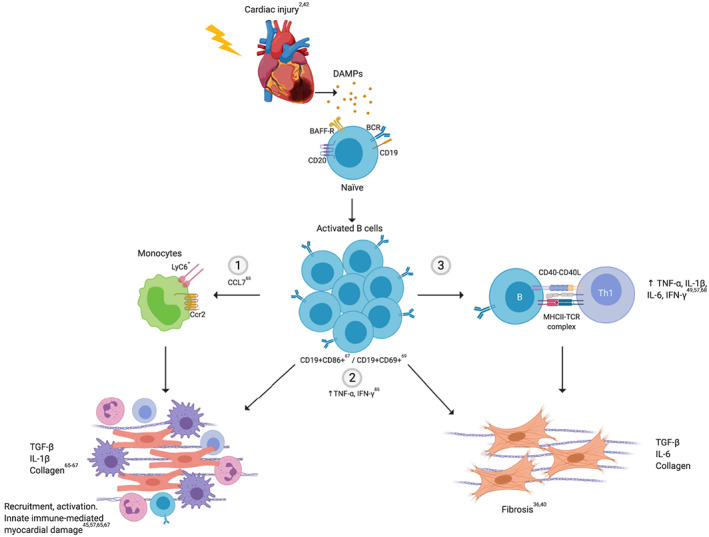Figure 2.

Antibody‐independent mechanisms. After cardiac ischaemic and non‐ischaemic injury, B cells become activated and proliferate in response to damage‐associated molecular patterns (DAMPs) that are released (from damaged cells and tissues) in response to cardiac injury. Their activation has been associated with chemotaxis of LyC6 + CCR2+ monocytes, which are involved in pathogenic remodelling and inflammation (1), though CCL7. The secretion of pro‐inflammatory cytokines is associated with fibrosis and detrimental function (2) as well as with proper cell activation and cell differentiation. The promotion of T‐cell activation and differentiation to the Th1 phenotype might be mediated by antigen cell presentation by B cells. This response contributes to the inflammatory milieu and may subsequently stimulate cardiac fibrosis through cardiac fibroblasts (3). BAFF‐R, B cell‐activating factor receptor; BCR, B cell receptor; CCL7, C–C motif chemokine ligand 7; CCR2, C–C chemokine receptor type 2; CD, cluster of differentiation (CD19 and CD20); IFN‐γ, interferon‐γ; IL‐1β, interleukin‐1β; Th1, type 1 helper T cell; TGF‐β, transforming growth factor‐β; TNF‐α, tumour necrosis factor‐α. Original image created with BioRender®.
